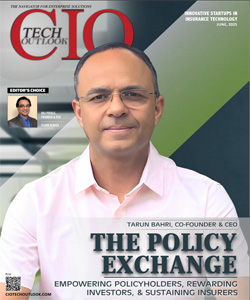4 Critical factors: Experience Design(XD) for business success
Manish Pillewar , Solution Consultant, Sahaj Software Solutions Pvt Ltd
 4 Critical factors: Experience Design(XD) for business success
4 Critical factors: Experience Design(XD) for business success
Looking to inject some innovation into your product lifecycle? You’ve developed “awesome” software that nobody uses? Limited by your tech stack? Need to understand your customer’s mind a bit better? Enter Experience Design (XD). No, it isn’t the panacea of all software development ills, but can surely help kickstart the process of
XD Rattles the innovation DNA. Brings focus and viability to disruptive thinking.
“You can’t connect the dots looking forward; you can only connect them looking backward. So you have to trust that the dots will somehow connect in your future. You have to trust in something — your gut, destiny, life, karma, whatever. This approach has never let me down, and it has made all the difference in my life." -Steve Jobs
Businesses often go down the path of redeï¬ning product or services when competing with disruption from start-ups, competitive benchmarking, brand elevation, cost beneï¬t, operational efï¬ciency or concerning levels of quality. Of these, the need to generate new, innovative and disruptive ideas is often imperative to business success and survivability through an increase in market share, market share continuity, price increase, increased ROI, etc. Businesses that fail to innovate risk losing market share and staff efï¬ciency. Innovation can be the key differentiator. For the likes of Apple, Google and Ikea, the design of their products has become the brand. Nothing else needs selling. The value and the delight that customers experience from using these products are the best brand ambassadors.
These products have succeeded in innovating solutions for unmet (and unidentiï¬ed) needs of its customers. Businesses that are committed to innovation are able to identify existing opportunities and those that will emerge in the near future effectively. The redesigned product or service initiates the rebirth for the business through increased customer engagement. Experience Design methods, tools and techniques can help organizations wake up from innovation inertia and leeway opportunities and resources towards making business missions more disruptive. In particular, the emerging practice of Service Design, infused with Agile and Lean principles facilitates innovation in a variety of ways by:
Identifying the true value of the service or product from business and the end user.!Quickening the cycle of conceptualize–validate-go live, by co-designing with the stakeholders. Allowing for rapid prototyping of new ideas for feedback and validation. Embracing failure, learning from it and succeeding sooner. Increasing the efï¬ciency of the product or service development process.
Increasing the overall efï¬cacy of the product or the service by keeping the end user at the center of product engagement Providing organizations with tools and processes for user centered innovation, disruption and transformation when designing services or products A customer-centered business realizes that good designers can help increase the probability of successful outcomes that improve the quality of the user’s life and bring value to the organization.
XD Is Inclusive. It aligns Business with the Customer
“There Is No More B2B or B2C: There Is Only Human to Human”- Bryan Kramer
Irrespective of what the business goal is, or how cool the technology showcase is, the product or the service is ultimately aimed at the customers or users. Startups and
The success of any product or service pivots on one critical factor- the way user perceive the end result, the whole package. Is the product intuitive? Is it easy to interact with? Does it help me do my job in the least amount of time with maximum accuracy? Is it reliable? Designers bring in investigative tools and techniques that help them get a comprehensive understanding of the users and what they value, including their goals, abilities and limitations. Users are seldom able to correctly identify the need; they however, recognize the value of the product or service interaction they are missing. Experience Design with
XD brings the focus back to the idea, with technology as the enabler
"You don't 'do' technology, you 'do' people and the people thing and then you add technology back in."- John Maeda
While technology should be viewed as the enabler of creativity and innovation, it isn’t long before organizations get stuck in a rut of technical lethargy. It’s quite easy to design solutions that fall within the technical capabilities – either of the organization or the resources that build it. While
For instance, in India, for every 10,000 people only 6 physicians exist, telemedicine and innovative hospital on wheels have brought the physicians and diagnosis to the doorstep. The idea is not to replace the doctor’s expertise, but to arm the patient with enough knowledge that helps them to take the next step. Technology can be a great helper to achieve this goal. Another example of technology as an enabler can be found in Tanzania. Designed by entrepreneur Solomon Faraji of
Innovative approaches to technology have helped the designers to think of different approaches to training, portability, ease of use, maintenance, repair and sustainability - making the product suitable for use in some of the most difï¬cult environments. As customers and end users interact with businesses through vast
XD brings in viability, feasibility and usability within the context of use
“A truly context aware system must not only know the state of factors viz. User, Task and Environment, but also be able to account for how changes in one affect the others.” -Bruce N. Walker, Raymond M. Stanley, and Jeffrey Lindsay
Irrespective of domain, the context of a system is made of three elements: the task being completed, characteristics of the user, and the physical environment that the system operates in. For instance, the inventory stock management tablets.Designed for warehousing and supply chain management purposes will need to be smudgeproof. The mobile screen designed to be really thin will also need to support ergonomics of an oilrig employee.
While considering the usage context may seem obvious, it isn’t always factored. Some buses, run by the corporation in Pune have the wheel chair access doors on the right side of the buses (the driver’s side), making opening, betting onboard and alighting, impossible. I recall the petrol inlet for my LML Vespa was under the seat.This was to prevent the theft of petrol. Never would have the designer imagined that the customer will need to get down from the scooter, insert the key to open the seat, hold the seat by one hand, and then struggle to open up the petrol cap - all this while there are other 30 customers in the line behind honking to get going! The layouts of the government ofï¬ces, including banks in most countries are not designed to handle large volumes of applicants adding to the frustration of serpentine queues.
Great products and services designed without the investigations of the customer environment do result in failure. A great example of design in context would be the Embrace Infant Warmer. Designers prototyped this device that costs 99% less than an incubator, has the potential to save millions of newborns that could die every day due to Hypothermia. The team initially thought reducing the cost of parts, materials and technology could solve the problem for rural developing countries. A user research trip, contextual observations and conversations with the real end users – mothers - offered insights that changed the solution’s approach. Instead of focusing on the hospitals, the team realized the real focus shifted to the mothers, who gave birth to the babies at their homes 30 miles away from the hospital. Portability, simplicity, reusability and freedom from power became the focus. The team tested prototypes of the new incubators with mothers in rural Nepal and India. Shaped like a simple small sleeping bag, the incubator, called Embrace Warmer, is kept warm through a
Experience Designers bring in techniques such as Contextual Inquiry, Visual Anthropology, Analytics, Focus Groups, etc. to observe and get insights that shape features, functionality and the usability of the product or service.
In Summary
Integrating Experience Design into your product/service development cycle helpsto infuse it with fresh ideas that resonate with your users and customers. It does so by helping you focus on the four factors that improve your chances of buildinga success product or service – Technology used, Business goals, User’s experience and the Usage Environment. Introduce aspects of Experience Design and Disruptive Thinking at the enterprise level and benefit from an innovative, user-focused culture with products and services that connect with your user.




